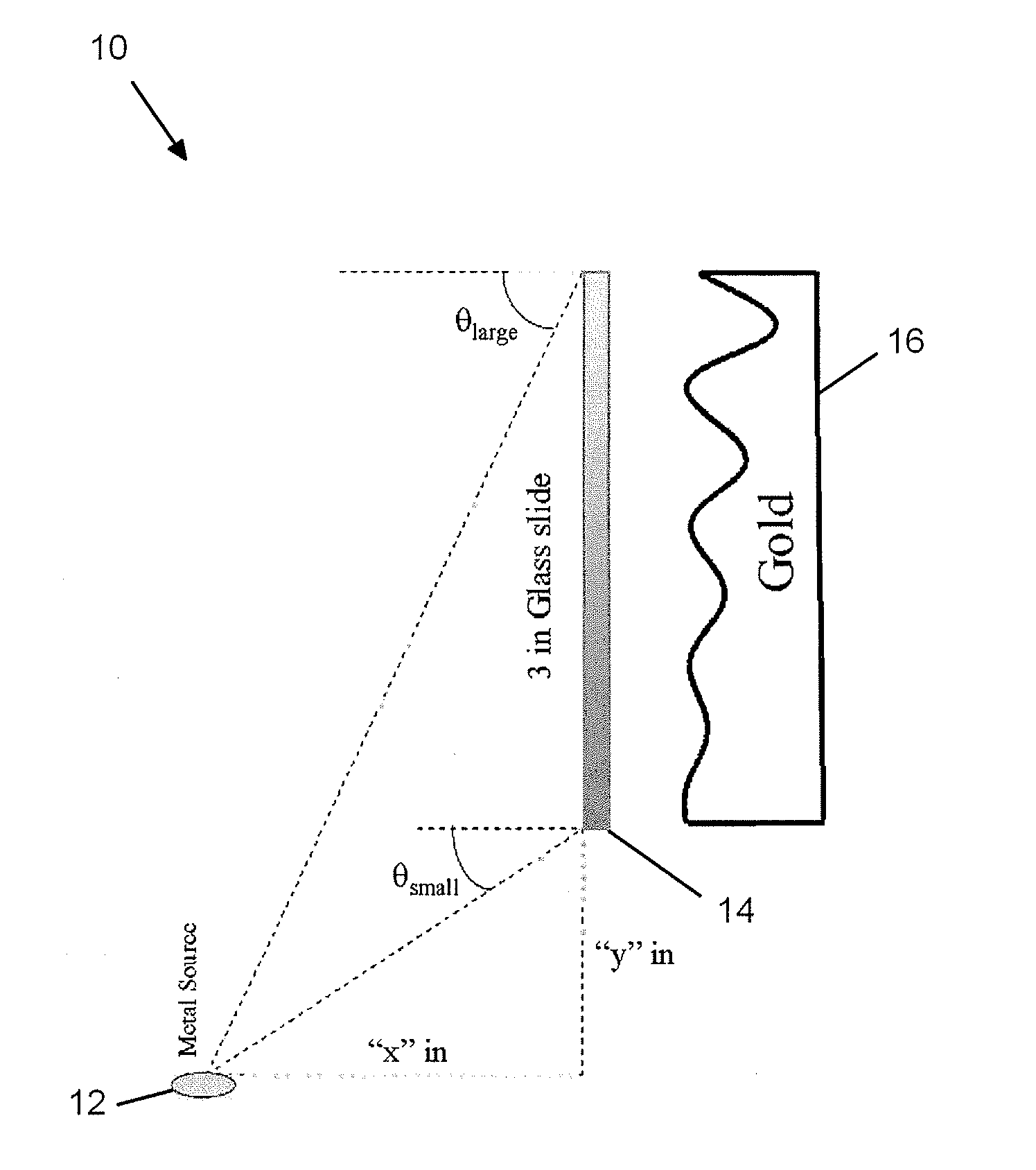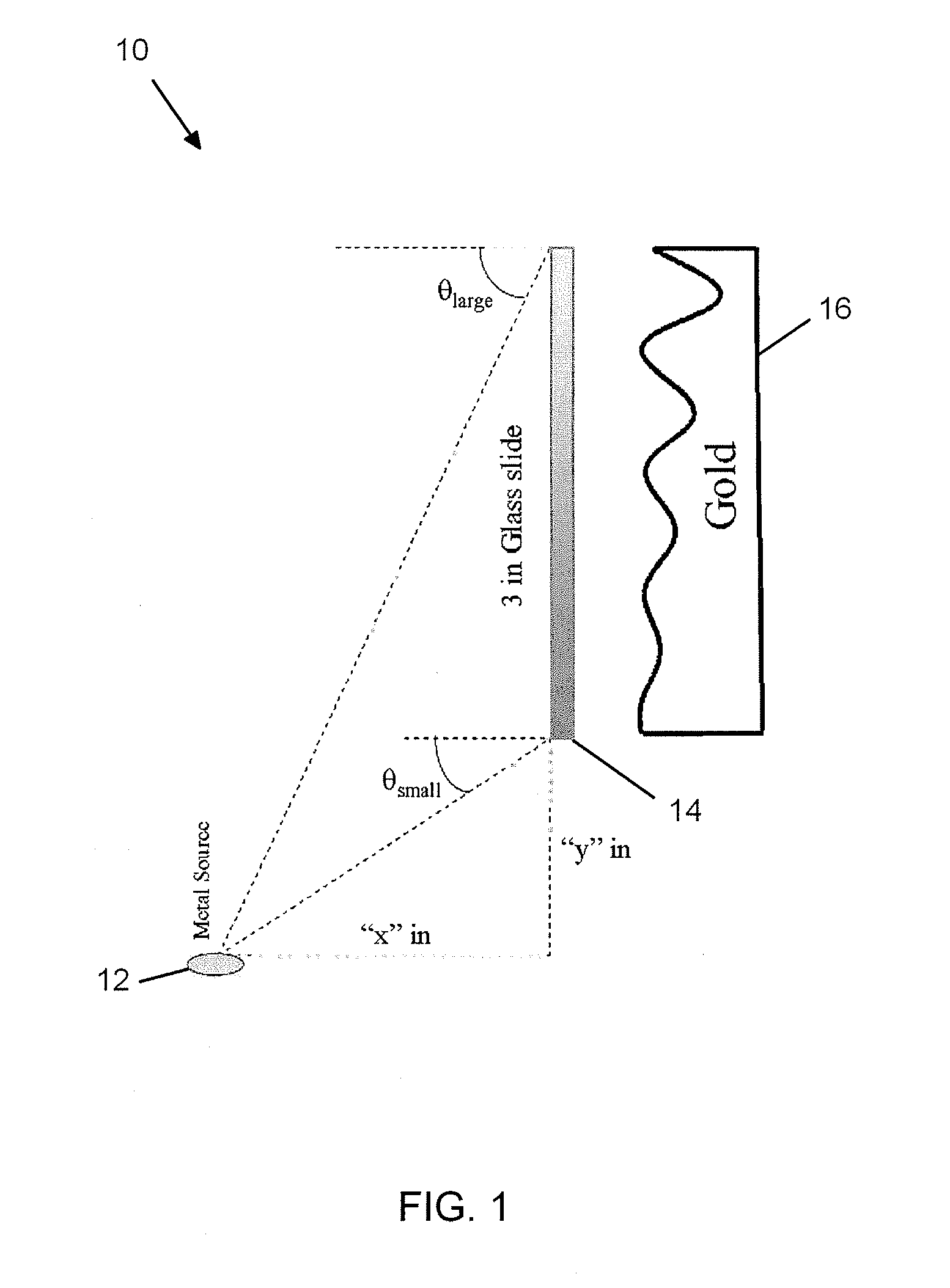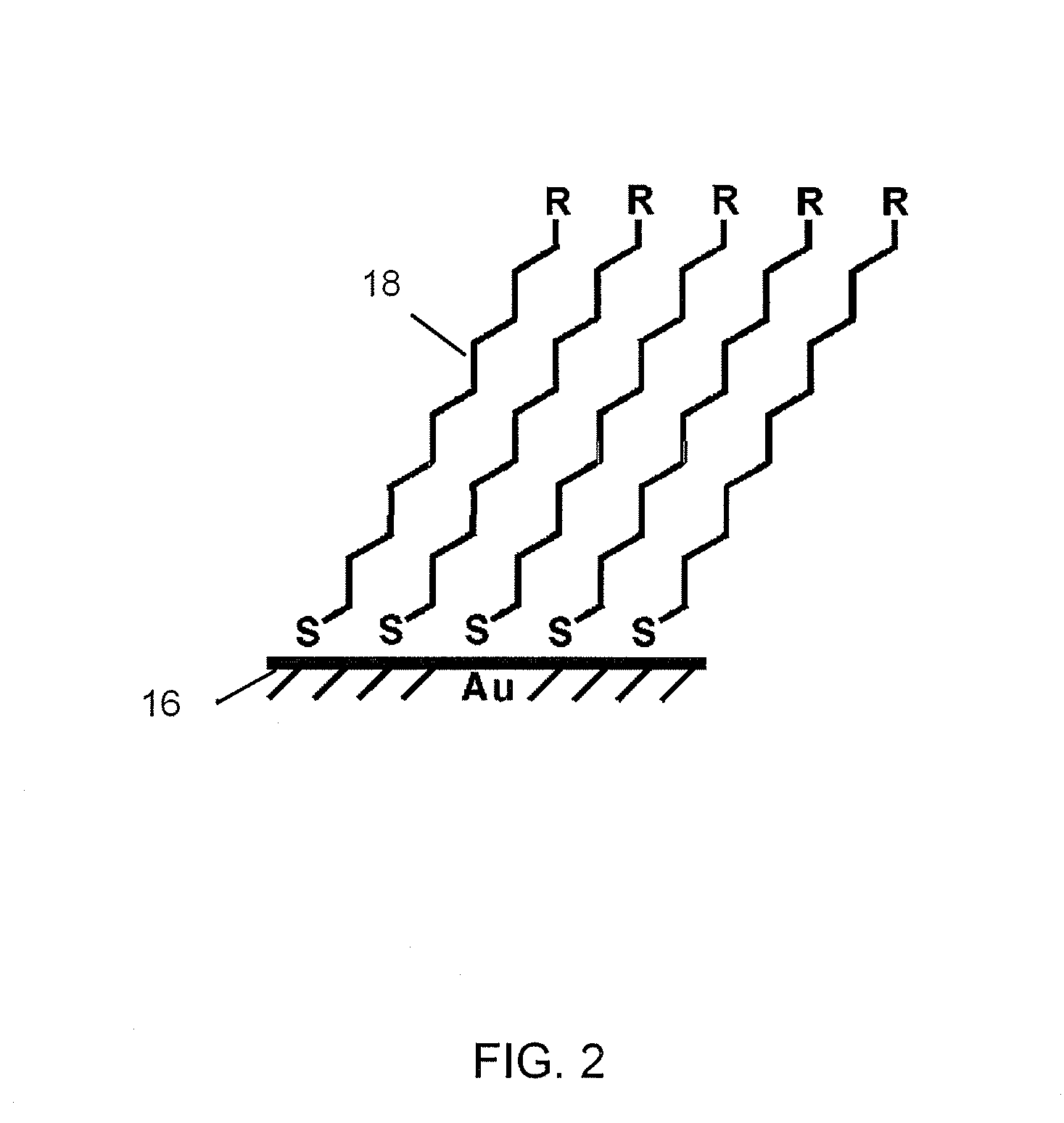Enhanced Bio-Assays By Using Gradient Nanotopgraphy
a nanotopography and bio-assay technology, applied in vacuum evaporation coatings, sputtering coatings, packaging goods types, etc., can solve the problems that compounds are not necessarily well adapted to accept and propagate cellular materials, and achieve the effects of increasing mammalian cell attachment and cell confinement, improving surface density of functional groups, and improving cell confinement to surfaces
- Summary
- Abstract
- Description
- Claims
- Application Information
AI Technical Summary
Benefits of technology
Problems solved by technology
Method used
Image
Examples
Embodiment Construction
[0031]Referring now to the drawings, wherein like numerals refer to like parts throughout, there is seen in FIG. 1 a system 10 according to the present invention for generating gradient nanotopography. System includes a metal source 12 for depositing a thin film of metal, such as gold, onto a glass slide 14. Source 12 is aligned to apply the metal onto slide 14 at a continuously increasing angle of incidence measured from the normal of the slide, thereby a gold film 16 having a varying nanotopographic design according to the present invention. As seen in FIG. 2, the geometry of the present invention may be used to support a self-assembled monolayer (SAM) 18 of alkanethiols on the gold film 16 of slide 14.
[0032]Referring to FIG. 3, the present invention also comprises a one-electron redox (oxidation and reduction) of a ferrocene-terminated monolayer on the gradient nanotopography. By measuring the redox activity of a ferrocene-terminated monolayer (see FIG. 3A), the surface density o...
PUM
| Property | Measurement | Unit |
|---|---|---|
| angle of incidence | aaaaa | aaaaa |
| angle of incidence | aaaaa | aaaaa |
| length | aaaaa | aaaaa |
Abstract
Description
Claims
Application Information
 Login to view more
Login to view more - R&D Engineer
- R&D Manager
- IP Professional
- Industry Leading Data Capabilities
- Powerful AI technology
- Patent DNA Extraction
Browse by: Latest US Patents, China's latest patents, Technical Efficacy Thesaurus, Application Domain, Technology Topic.
© 2024 PatSnap. All rights reserved.Legal|Privacy policy|Modern Slavery Act Transparency Statement|Sitemap



